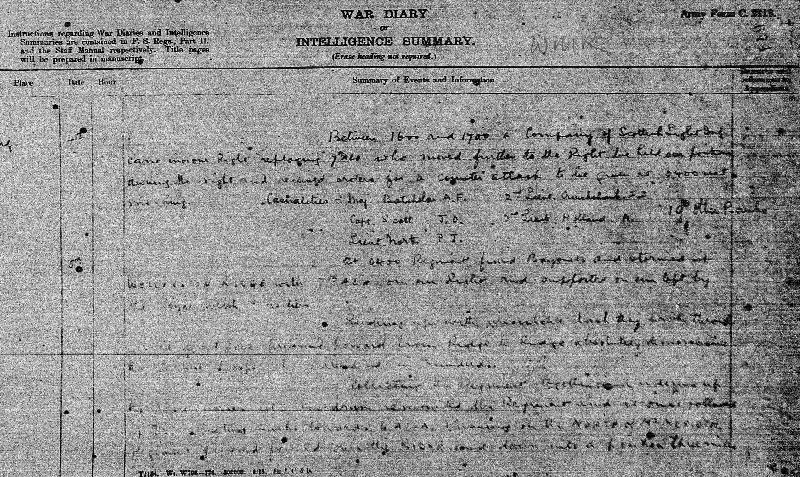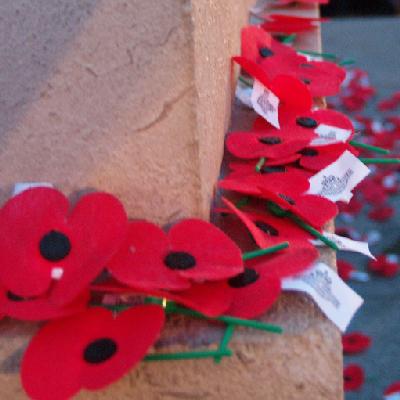Topic: BatzS - Bir el Abd
Bir el Abd
Sinai, 9 August 1916
Falls Account, The end of the pursuit
The Battle of Romani, 4-6 August and Bir el Abd, 9 August 1916
[Click on map for larger version]
[From: Military operations: Egypt and Palestine, Sketch 10 facing p. 178.]
As part of the Official British War History of the Great War, Captain Cyril Falls and Lieutenant General George MacMunn were commissioned to produce a commentary on the Sinai, Palestine and Syrian operations that took place. In 1928, their finished work, Military Operations, Egypt and Palestine - From the outbreak of war with Germany to June 1917, was published in London. Their book included a section specifically related to the battle of Romani and is extracted below.
MacMunn, G. & Falls, C., Military operations: Egypt and Palestine, (London 1930), pp. 194 - 199:
Part 5. The end of the pursuit.
The foresight of Kress in preparing successive lines of defence with each step forward was rewarded after his defeat at Romani. He had lost between three and four thousand prisoners, but he had saved all his artillery except one battery and had kept his tired troops in hand. He had fought one successful rear-guard action at Qatiya and was now prepared to meet an assault at Oghratina.General Lawrence's orders for the 6th August directed the mounted troops (less the 1st and 2nd L.H. Brigades, whose horses were unfit to move) to press forward vigorously against the enemy, who was believed to have left a rearguard of one regiment on the Qatiya line, and to attempt to cut off the retreat of men and material. The 42nd Division was to advance eastwards at 4 a.m. and occupy the line from Bir el Mamaluk to Bir Qatiya, supporting the mounted troops as required. The 52nd Division was to advance from Abu. Hamra at the same hour and prolong the line of the 42nd to the north-east. It was stated that Section headquarters would moue to Romani at noon.
At dawn the N.Z.M.R. Brigade, followed by the 5th Mounted Brigade, advanced on Oghratina, but found the enemy as well placed as on the previous day. The 3rd L.H. Brigade on the right advanced in the direction of Badieh, but the Turkish left was well secured and little progress could be made.
Meanwhile, the 42nd and 52nd Divisions had carried out their orders, but there was never the remotest chance that they would be able to support the mounted troops against the Oghratina position. The heat was again terrific, and the heavily burdened infantry - especially that of the 42nd Division, not yet hardened to desert conditions or trained in the conservation of water - suffered tortures on its march. The 127th Brigade did not reach Qatiya till evening was drawing on, and from it alone 800 men had fallen out by the way. The 125th, 155th and 157th Brigades also had many casualties from the sun. The medical services worked their hardest, but their efforts did not suffice. Next day it was necessary to employ the Bikanir Camel Corps, a detachment of Yeomanry and even aeroplanes to search the desert for the unfortunates who had fallen out on the march and now lay upon the sand, often in a state of delirium. The four brigades struggled on to the line upon which they had been directed, but that was the end of the pursuit so far as the infantry was concerned. It was now, indeed, obvious that its employment was useless in the present conditions, and, if persisted in, would cause many deaths. In the course of the day the Mobile Column had been in touch with the enemy between Bayud and Mageibra, but could make no impression on his flank.
On the 7th August the same three mounted brigades again probed the enemy's position at Oghratina, but once again found it too strong. Next morning it was discovered that the position had been evacuated, and patrols found the enemy back upon the old position at Bir el Abd, where he had first appeared three weeks earlier. On this day the Mobile Column did succeed in getting round the enemy's flank but was too weak to embarrass him seriously, and fell back at night to Bir Bayud.
To General Chauvel it appeared that there was still a possibility that a bold attack on the enemy's position would be successful, if all the mounted troops were put at his disposal. His plan, to which General Lawrence gave his approval, was as follows:-
The 1st and 2nd L.H. Brigades, now restored by their rest, were to march out to Qatiya under the command of Colonel Royston, water there, march through the night to the Hod Hamada, 4 miles north-west of Bir el Abd, timing their movement so as to arrive at 3 a.m. on the 9th August. There they were to bivouac for an hour and a half, and then advance to a point 2 miles north-east of Bir el Abd, to co-operate with the N.Z.M.R. Brigade in an attack on the enemy's position at 6.30 a.m.
The 3rd L.H. Brigade was to attempt to work round the enemy's left flank and cut off his retreat;
the 5th Mounted Brigade was to be in reserve.
The scheme was in the nature of a gamble. If the enemy were demoralized, it had a chance of success; if not, very little, since it involved an attack supported by four horse artillery batteries on a prepared position held in superior strength and covered by double the number of guns, including heavy howitzers, and strong in machine guns. [The five brigades of General Chauvel's force, exclusive of horseholders, did not number more than 3,000 rifles. The enemy had probably double that number at Bir el Abd.] Yet it appeared a legitimate gamble, because the attacking troops were more mobile than the defence and could be drawn off if the task was found to be beyond their capacity.
The four attacking brigades began their advance before daylight, the 3rd L.H. Brigade leading on the right with the object of finding and turning the Turkish left. The New Zealanders in the centre advanced at 4 a.m., with a gap of a mile between them and the 3rd Brigade. The remaining two Australian brigades moved off at 5 a.m., with intention of enveloping the Turkish right while the New Zealanders gripped the centre. As these brigades came up into line, their left on the Bardawil Lagoon, there was a further gap of half a mile between their right and the New Zealanders. The four brigades covered a front of 5 miles, which, counting the 5th Mounted Brigade in reserve, gave them less than a rifle to three yards of frontage.
By 5 a.m. the New Zealanders, advancing astride the caravan route, had driven in the enemy outposts and reached some rising ground which overlooked Bir el Abd and the Turkish centre. But the enemy quickly realized how thin was the line opposed to him and at 9 a.m. issued from his trenches to counter-attack. The fire of the Somerset Battery and of the brigade machine guns checked his advance, but a hot fight for fire supremacy followed and the New Zealanders found it extremely difficult to maintain their position. The Australian brigades on right and left were likewise held up.
At 7.30 the Turks again attacked, making for the gap between the New Zealanders and the 2nd L.H. Brigade, but the breach was partially closed by a squadron of the 5th A.L.H. from reserve, and the Turkish advance came to a standstill. A little later General Chauvel, seeing that the 3rd L.H. Brigade on the right was unable to fulfil its mission of turning the Turkish flank, ordered it to close in towards the New Zealanders.
Turkish transport could be seen moving eastward from Bir el Abd; columns of smoke were pouring up from burning stores. It was therefore clear that the enemy was uneasy regarding his power of resistance. The New Zealanders redoubled their efforts, but only succeeded in advancing sufficiently to expose their line to flanking attacks, as the Australian brigades were unable to conform to the movement. By 10.30 all progress was over. Moreover, Br. General Chaytor, in view of renewed pressure on the gap on his left, was compelled to ask for assistance, whereupon the Warwick yeomanry was sent to him, one squadron dashing up at a gallop to a position on his left.
The enemy, realizing now that he could hold his position, returned to the offensive at midday, launching another heavy attack upon the Canterbury and Auckland Regiments and the squadron of the Warwicks. Again he was beaten back, but by 2 p.m. the attack had extended to the British left flank. The Ayrshire Battery, supporting Colonel Royston's force, came under very heavy shell fire and lost so many horses that for a short time it was immobilized and ran some risk of capture, the riflemen in front of it having been compelled to give ground. Eventually the guns were withdrawn, but only just in time, as Colonel Royston's troops were now retiring. A further withdrawal of the 3rd L.H. Brigade on the right made the situation of the New Zealanders critical.
At 5.30 p.m. General Chauvel gave orders for a general retirement. It has been remarked that he had decided upon the attack only because the mobility of his troops gave them an opportunity to disengage themselves if necessary. But it was now proved that for dismounted cavalry in action at comparatively short range against superior numbers to break off the fight is no easy matter. It was only their tenacity and the welcome fall of darkness that saved the New Zealanders. The Machine-Gun Squadron, under Captain R. Harper, had at the end of the action all its guns in line, some of them firing at a range of one hundred yards. Under cover of these machine guns and of squadrons of the 5th Mounted Brigade the brigade was finally able to withdraw. The British losses in the action were just over three hundred, including 8 officers and 65 other ranks killed.
General Lawrence was anxious that the force should bivouac as near as possible to Bir el Abd, in case another attack should be practicable next day. But General Chauvel, in view of the strength of the Turkish position and the exhaustion of his troops, felt compelled to withdraw to Oghratina, where the force bivouacked, leaving the 3rd L.H. Brigade out to watch Bir el Abd.
The Mobile Column had not been placed under General Chauvel's orders and co-ordination had had to be arranged through Section headquarters. Owing to failure of communications it did not directly co-operate in the action at Bir el Abd. It had, however, a sharp brush with an enemy at Hod el Bayud in the morning, the Turks leaving 21 dead on the field.
There was no further serious fighting. Bir el Abd was found evacuated on the 12th August and the enemy back upon a new position at Salmana, 5 miles to the cast, where he was engaged by the horse artillery batteries. He then drew off to his starting point, El Arish, leaving an outpost at Bir el Mazar.
Previous: The Pursuit on The 5th August
Next: The Results of the Battle
Further Reading:
Battle of Romani, Sinai, August 4 to 5, 1916
Bir el Abd, Sinai, 9 August 1916
Battles where Australians fought, 1899-1920
Citation: Bir el Abd, Sinai, 9 August 1916, Falls Account, The end of the pursuit








